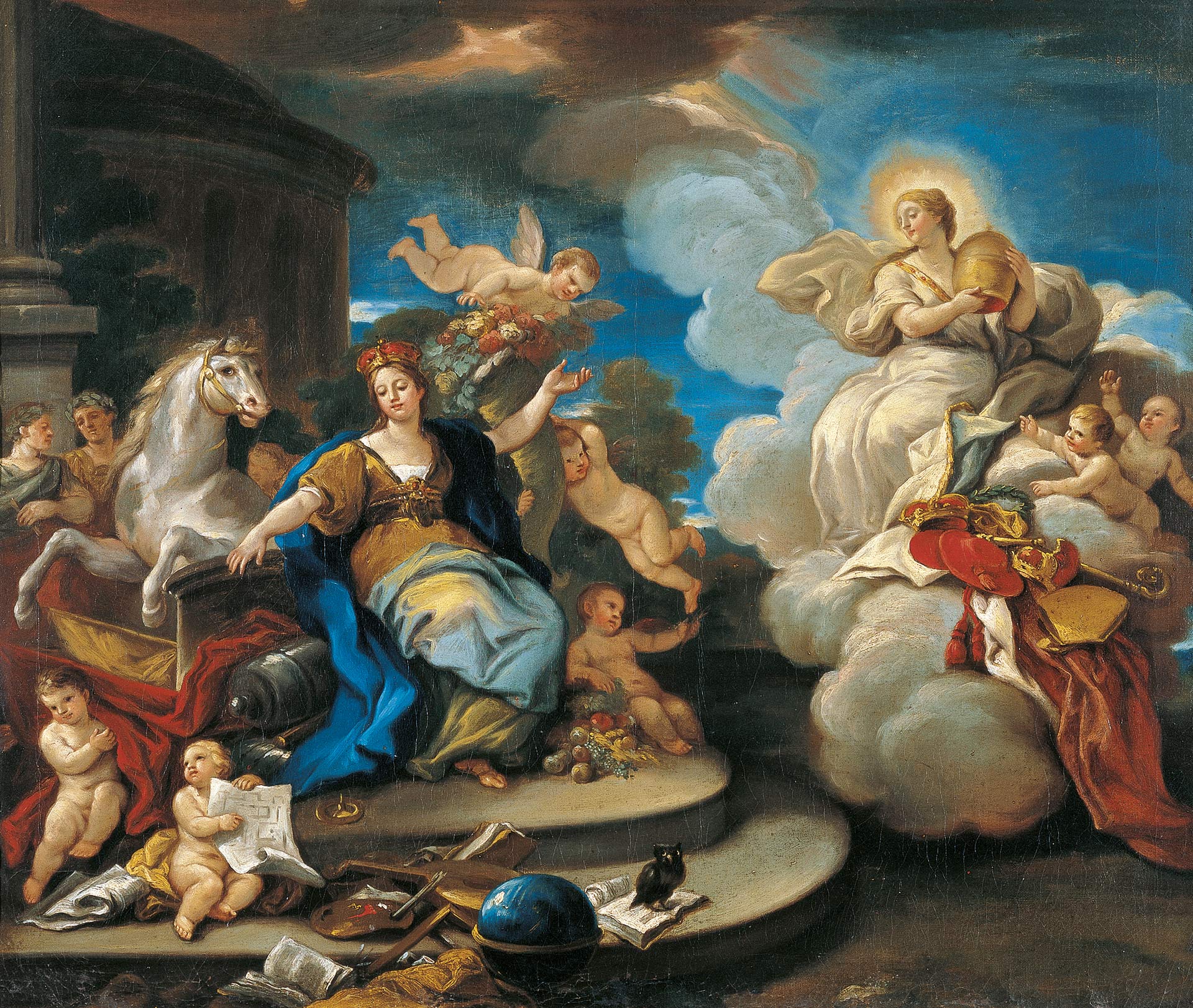
Luca Giordano (copias) (Naples, Italy, 1634-1705)
Europe (The Four Parts of the World: Europe, Asia, Africa and America series)
Circa 1687–1689
WORK INFORMATION
Oil on canvas, 60 x 75 cm
These are old copies of the series The Four Parts of the World by Luca Giordano (Naples, Italy, 1634–1705), sent to the Alcázar in Madrid around 1687–1689 before the painter came to Spain. The original canvases were seen at the palace by Ponz and Ceán Bermúdez and were kept for a time in the Casita del Príncipe (The Prince's House) at El Escorial. Patrimonio Nacional, the Spanish heritage agency, gave them to the embassy of Spain in Lisbon on long-term loan, where one was destroyed and the other three suffered extensive damage in a fire at the embassy during the tumultuous events of 1974. Each canvas measured 116 x 135 cm. They were engraved by Juan Antonio Salvador Carmona (1740–1805) and widely circulated. We know of two copies made by Giordano's workshop. One of them, on long-term loan from the Museo de San Martino in Naples, is held at the Reggia di Caserta and is slightly larger than the original (120 x 173 cm). The other, which in 1961 was at the Hazlitt Gallery in London, was very similar in size to these copies (56 x 67 cm).
Giordano chose to personify the four continents or parts of the known world as female figures. Europe is represented by a seated figure with an imperial crown surrounded by putti bearing the symbols of the arts, sciences and wealth, and accompanied by a horse. In the sky, on a throne of clouds, the Church is depicted as a resplendent woman holding a papal tiara in her hands. Asia is portrayed as a young woman crowned with a wreath of flowers and flanked by men wearing different garments and turbans, a camel and many children lighting censers. In the background we see a classical figure on horseback, undoubtedly Alexander the Great, the continent's first explorer. Africa is represented as a black woman wearing a coral crown and standing in a rocky desert landscape, surrounded by exotic animals (lions, tigers and elephants) and black and white women and children, who seems to be addressing a Roman soldier approaching her. No doubt the soldier is a reference to Scipio Africanus and his legions. Finally, America is symbolised by a semi-nude Indian woman wearing a feather headdress and armed with a bow, arrows and quiver, about to lance a prostrate naked man in the presence of children, also nude, and women taking shells from the sea. In the distance, Spanish ships approach the coast, and in the heavens a crowned allegory of Spain with a lion contemplates the scene below.
All four works, very faithful to the originals, are of remarkable quality. They are important because they attest to the success of Giordano's compositions, which were repeated and copied several times and popularised through prints. [Alfonso E. Pérez Sánchez]

